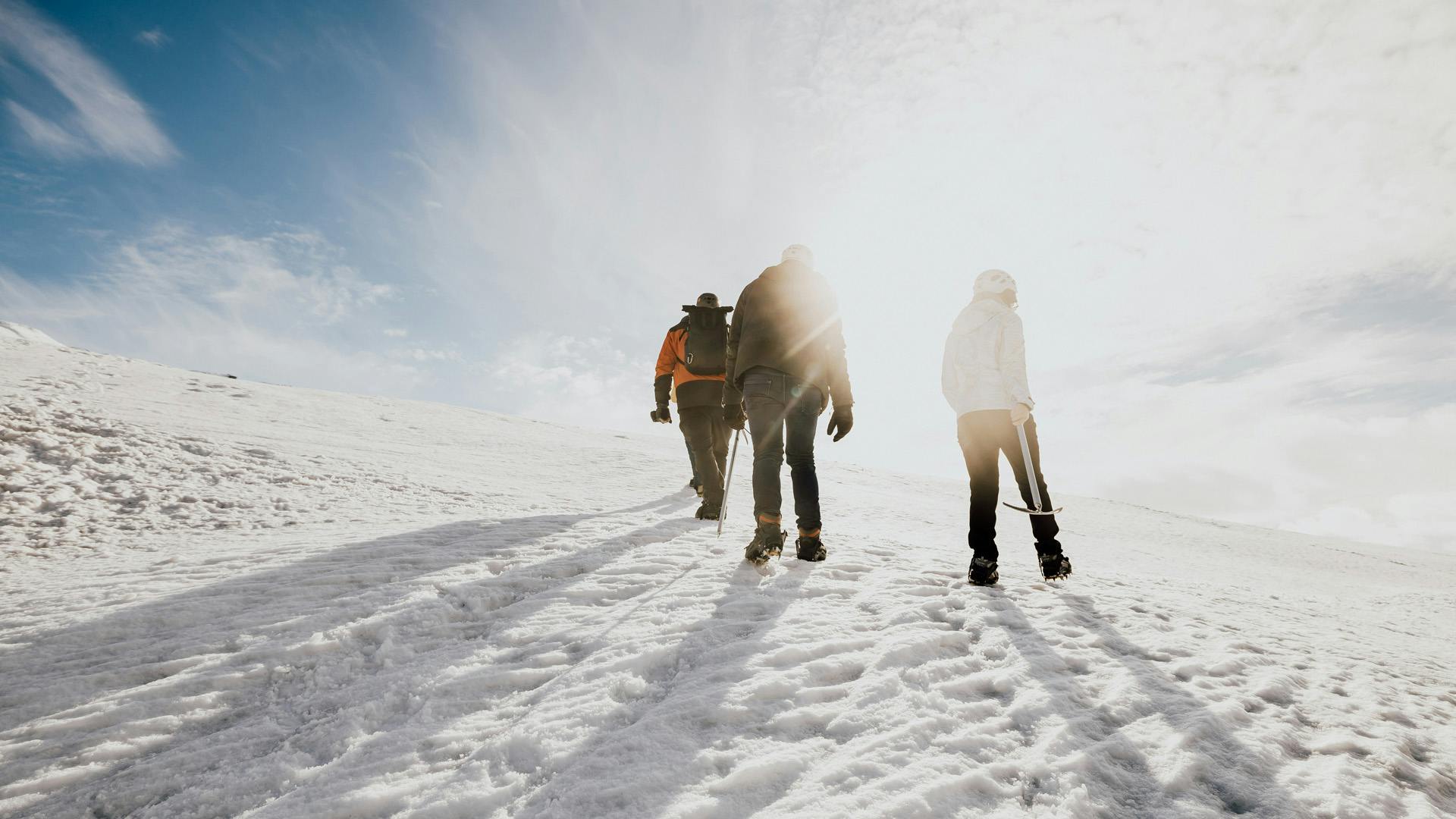
How much Snow does Iceland Get
Iceland can be a cold, windy and cloudy place. Icy winds keep blowing across the country due to its high latitude and proximity to the North Pole, while the influence of the Gulf Stream tempers the region, leading to a forever-unstable climate, with temperatures changing suddenly between day and night. However, the range of the switch in temperature is limited. The Northern coast area of the island is colder compared to the southern one. So, how much snow can you expect on your Iceland expedition?
Into The Country in Iceland
In the interiors of Iceland sit enormous glaciers. Presence of plateaus and mountains leads to a natural decrease in temperature with fall in their altitudes. Ice tongues descend towards the plains from these ice bodies. What makes Iceland unique is the geothermal activity taking place here at the same time, causing the formation of so many geysers and hot water springs. How amazing is it to be able to visit lava fields, ice caps and hot springs, all in one country.
Underground volcanic activity may result in the sudden melting of glaciers, culminating in flooding. Trees and sandy soils are remarkably absent in inland regions, leaving plenty of open space for dust storms.
Thanks to cold summers and heavy snowfalls, snow only melts at low altitudes. The snowline here is low, around 700 metres above sea level. Global warming has had a deleterious effect on the glaciers of Iceland.
The well-known Vatnajökull glacier is a plateau about 1,500 metres high. The ice here is approximately 380 metres thick, covering several volcanoes. Hvannadalshnúkur is the highest peak in Iceland, residing in the southern limit of Vatnajökull. The peak is 2,110 metres high.
It’s quite unpredictable
While all these details about Icelandic weather are true, there is a lot about this island that is tough to predict. There are some winters here when it hardly snows, while others see perpetual fall of snow. In one of the winter seasons, there was hardly any snow for the full season until one day, it snowed over half a metre. In March 1995, Skeiðsfossvirkjun power plant in North Iceland recorded 279 cm of snowfall.
Sometimes, it snows excessively in the northern part of the country. People don’t even have enough time to vacate their houses and it simply becomes impossible to cross the mountain pass between the north and east. The authorities, though, work on these days to keep the ring road open all year round. If you plan to drive your own vehicle in Iceland during the winters, check the weather forecast regularly. The weather is generally hospitable, but you never know when a storm might appear.
Snow during Christmas
If you are planning to visit Iceland during Christmas, get ready to enjoy big, fluffy snowflakes falling when there is no wind. Glance around and you will see everything wrapped in cotton. You will have a delightful time playing in the snow.
Snow in Major Towns: Reykjavik, Akureyri and Ísafjörður
In the capital Reykjavik, it doesn’t snow like crazy, but it is enough to engage you and make for a breathtaking view. Most of the snowfall takes place in December, January, February and March. March records the maximum snowfall, but it won’t stick as much. If you are coming from a place with a warm climate, you will be quite delighted to see the snow. However, there are places in Iceland itself which receive more snowfall than the capital Reykjavik.
Akureyri, the largest town in northern Iceland, generally witnesses colder days in winter compared to Reykjavik and more snow. Akureyri has many winter activities you may be interested in such as skiing, snowboarding and snowmobiling tours.
Ísafjörður, a town in the Icelandic Westfjords, may sometimes get inaccessible during winters because of heavy snowfall. The same happens in other human settlements as well in the Westfjords. Imagine, the Northern Lights, on a cold quiet night in a remote fjord with no disruptions.
Different parts of Iceland
When you take into account the temperature, winters in Iceland are not as cold as you’d see in Russia, Canada or Greenland. The temperature is mild throughout the year. There is no drastic change between summer and winter like at many other places in the world.
What makes Iceland unique is this mild change in weather is unpredictable! You can never be sure of anything when it comes to weather in Iceland. You may pass through a valley with a clear sky and then suddenly find yourself engulfed in a blanket of fog.
Moreover, weather in different parts of Iceland may be different. That should come as no surprise because you can find everything from barren plains, valleys and glaciers – all on a single island!
Having a winter sojourn in Iceland can be fascinating. Just make sure you are carrying enough warm clothes, stay informed about weather conditions and you will be able to enjoy the best of the season.